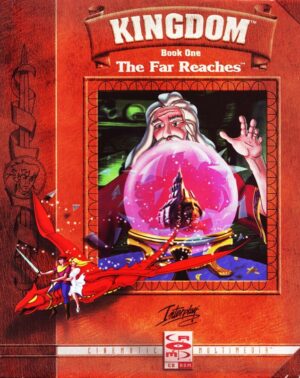Retro Replay Review
Gameplay
Retourtje Mali offers a gentle blend of exploration and quiz-based challenges, designed to keep young players engaged while they learn. The core gameplay revolves around navigating a simplified map of Ségou and the village of Missango, clicking on various hotspots to uncover videos, slide shows, and contextual information. This click-and-discover format is intuitive enough for children, yet layered with enough depth to encourage curiosity and repeated playthroughs.
(HEY YOU!! We hope you enjoy! We try not to run ads. So basically, this is a very expensive hobby running this site. Please consider joining us for updates, forums, and more. Network w/ us to make some cash or friends while retro gaming, and you can win some free retro games for posting. Okay, carry on 👍)
The expedition mode, which frames the quiz elements, gives players a clear objective: find the clues that answer each question about daily life in the Sahel region. Rather than traditional question-and-answer screens, the game integrates every query into the environment. You might need to inspect the photo album of the Keita family to learn about local festivals or examine a well to understand water collection methods. This makes learning feel like part of the journey, rather than a separate task to be completed.
The pacing of Retourtje Mali is thoughtfully calibrated for an educational audience. There are no high-pressure time limits, and hints are subtly provided through repeated interactions with the same hotspots. As a result, children can explore at their own speed, following their interests without feeling rushed. The balance between free-form exploration and guided objectives helps sustain engagement, even if some players might wish for a bit more interactivity beyond point-and-click.
Graphics
Visually, Retourtje Mali strikes a pleasant compromise between educational clarity and immersive scenery. The background art for Ségou and Missango uses warm earth tones and stylized sketches, evoking the feeling of a hand-drawn map or educational poster. While not cutting-edge by modern gaming standards, the style is well-suited to the game’s pedagogical goals and helps focus attention on the informational content.
One of the game’s strongest assets is its archival photo and video material. When you click a hotspot, you often trigger a slideshow of real-life images or short documentary clips that depict Malian landscapes, markets, and family life. These authentic visuals deepen the connection between player and subject, providing an unvarnished look at life in the Sahel. The transitions are smooth, and the multimedia elements load quickly on reasonably modern hardware.
The user interface is kept minimal, with hotspots clearly marked but not so obtrusive that they break immersion. Simple icons and brief text prompts guide players toward the next learning opportunity. Although the resolution of some older footage can appear grainy on large displays, the educational value of these recordings outweighs any minor technical shortcomings.
Story
At its heart, Retourtje Mali is a narrative-driven educational experience. The Keita family acts as your hosts in the village of Missango, and each member—from grandparents to children—offers insights into daily routines, traditions, and social customs. Through their eyes, players witness rice harvesting, market bartering, and family celebrations, all framed within the larger story of life in a Sahelian community.
There’s no high-stakes drama or villain to defeat; instead, the “story” unfolds organically as you piece together answers to your expedition questions. This approach reinforces the game’s core message: learning about different cultures is an exploratory, respectful process. The lack of artificial conflict ensures that educational content remains front and center, though some older children might wish for a stronger narrative hook.
Dialogue snippets and narrated segments are concise and age-appropriate, avoiding heavy jargon while still introducing terms in Bambara and French. This multilingual infusion adds authenticity without overwhelming young learners. By the time players complete the expedition, they’ve gained a coherent, albeit introductory, understanding of the economic, social, and environmental factors shaping life in Mali.
Overall Experience
Retourtje Mali stands out as an earnest attempt to dismantle stereotypes about third world countries by presenting Mali as a vibrant place with rich traditions and resilient communities. Its strengths lie in the seamless integration of educational content into interactive exploration, making it feel less like a school assignment and more like a cultural adventure.
Though the game’s technology may feel dated to seasoned gamers, its target audience—children and educators—will likely appreciate the straightforward design and meaningful content. The lack of flashy mechanics or high-octane action isn’t a drawback here; instead, it underscores the developers’ commitment to thoughtful, respectful representation. Classrooms and at-home learning environments alike can benefit from the game’s structured quizzes and multimedia segments.
Ultimately, Retourtje Mali succeeds in its mission to provide an accessible window into life in the African Sahel. For parents and teachers seeking an engaging, informative title that broadens cultural horizons, this game delivers a solid, memorable experience. While it may not replace more advanced educational tools or full-fledged adventure games, it carves out its niche as a gentle invitation to understand and appreciate a part of the world often overlooked in mainstream media.
 Retro Replay Retro Replay gaming reviews, news, emulation, geek stuff and more!
Retro Replay Retro Replay gaming reviews, news, emulation, geek stuff and more!




Reviews
There are no reviews yet.